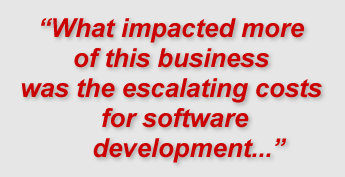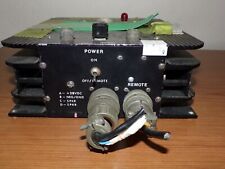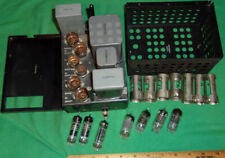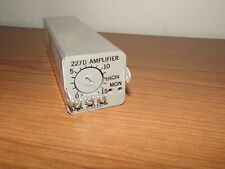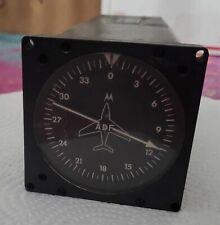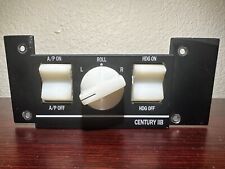Software Development
20mm: What do you think today’s simulation fans want (besides everything). Is it mostly gameplay, eye-candy, a dynamic campaign, a solid multiplayer, better-and-better AI, or some new element?
 Oleg: I would say everything anyway! And when we give more and more, making 3D more and more close to a realistic image they never stop their complaints. Comments like, “This screw is not on the right place or this curl of the cloud doesn’t look good”. At the same time a few users would like too much realistic control of aircraft using all the devices like in real life. These are in minority. So there always should be the right calculated balance between realism and usability for a casual player, or we will be not able to sell the new product well and cover our expenses.
Oleg: I would say everything anyway! And when we give more and more, making 3D more and more close to a realistic image they never stop their complaints. Comments like, “This screw is not on the right place or this curl of the cloud doesn’t look good”. At the same time a few users would like too much realistic control of aircraft using all the devices like in real life. These are in minority. So there always should be the right calculated balance between realism and usability for a casual player, or we will be not able to sell the new product well and cover our expenses.
Flexman: This is a lovely question. “AD” and I have pretty strong feelings about the kind of games we like. A lot of my friends play a variety of combat titles but quite often only have time to dedicate to just one. They used to buy into any new sim and not play it more than a few hours. With money being tight today I think everyone is more careful about what they purchase.
The most popular simulations don’t have any discernable gameplay, at all. You get a plane or a tank, or helicopter. Then you are left to figure out what to do with it. So I don’t think they want that, except when they get it in a game like Apache Air Assault, they love it, but are left wanting. Simply reducing workload and icon overlays doesn’t make it as attractive a game to casual players. Game design is something that seems to be an afterthought or an unwanted visitor. So long as this trend continues then PC simulations will continue to be marginal. As a genre it can do better in the marketplace if it really wanted to. There’s been ten years of seminars on how to engage players but few of these trends have been picked up in a genre that started out with them.
It’s a little frustrating as we grew up with the idea that combat simulations were fun and entertaining, they had gameplay. The last in-depth simulations with some level of measurable gameplay was Falcon 4.0 and Enemy Engaged: Comanche vs. Hokum. After that they became technical exercises rather than games, project staff didn’t seem to include “game designers”, just “editors”. That’s where it all went wrong. Mathematicians would call it a “feedback” loop. The press and community focus was on the nuts and bolts, pressing for more realism which shapes product. So the cycle continued while costs spiraled with complexity introduced by evolving hardware.
Regarding eye candy, it’s the shop window. No doubt eye candy is important, it’s also become the easiest aspect to improve with off-the-shelf CDs of high-end textures, shaders and asset stores for developers. All you need is cash.
Multiplayer is one of those “check the box” features for publishers. Recent surveys suggest that only 20% of gamers go online yet it’s such a big deal if you don’t have any kind of multiplayer. Given the lack of offline content in some games, going online is the only way to extend the experience.
Ssnake: Solid gameplay is and will remain king. The rest are supporting elements. Solid graphics and multiplayer simply are taken for granted, and everybody wants smarter computer-controlled opponents. For a ground based simulation the challenge is to create more complex environments and still have computers navigate competently under real-time conditions without hogging too many CPU cycles.
 Jason: Oh ya…they want everything! LOL But I think watching Rise of Flighthaving to go through its pains and the long delayed launch of Storm of War andJet Thunder demonstrate how difficult it is to develop these types of products even if you have a big budget or no budget. I hope the community will be a little more understanding when something is not included at launch. With no regular source of financing, simmers are going to have to get used to new approaches to development and release schedules. The RoF experience is only the beginning of how development teams will have to cope with the challenges of development. I hope I am wrong, but I just don’t see any of the old development and business models working in the future. I think the question better asked is “What features are absolutely necessary at launch and which ones can be added later?”
Jason: Oh ya…they want everything! LOL But I think watching Rise of Flighthaving to go through its pains and the long delayed launch of Storm of War andJet Thunder demonstrate how difficult it is to develop these types of products even if you have a big budget or no budget. I hope the community will be a little more understanding when something is not included at launch. With no regular source of financing, simmers are going to have to get used to new approaches to development and release schedules. The RoF experience is only the beginning of how development teams will have to cope with the challenges of development. I hope I am wrong, but I just don’t see any of the old development and business models working in the future. I think the question better asked is “What features are absolutely necessary at launch and which ones can be added later?”
Vlad: It seems to be hard to outline one specific feature. All of a good game’s features should be balanced. Fans do usually want something that is missing in a specific game.
Dante: Today’s simulation fans want accuracy above all. A dynamic campaign is very welcome for them as well.
Polovski: I think most real fans of a genre like to own all releases of any note, even if it has some elements they require and one or two missing from their list of “must have” features. Many cannot ignore other simulators especially ones with a decent reputation. So although budgets are a little tighter these days and maybe some sim fans are a little choosier, ultimately a true flight simulator fan will own most of those that are in their favorite eras even if it takes them a while to buy the others. Many of the classic sims last decades and are well worth owning (there aren’t exactly many around!).
20mm: It appears that the development method of console titles that are ported to PC titles is growing. Has this been an approach that has affected any of your products?
Polovski: Not at the moment.
Ssnake: No, but of course it has an impact on the strategic assessment of the market and its development (see above). Personally, I really hate getting clunky console user interfaces. I mean, just look at Mass Effect and Mass Effect 2 and this stupid dialog wheel and the battle pause menu. On the PC platform, Fallout 3 was too easy as a shooter with mouse control. This is all driven by the constraints of your average console game controller. Of course, all these titles were good entertainment, don’t get me wrong. But this is what you get when you can’t curb piracy on a platform — ports that usually have some user — interface issues.
Buckshot: For serious/in-depth simulations, the current hardware limitations inherent in the console world are a serious limitation. In our business a simulation can use whatever hardware it can get. Updates to a well written simulation can be released when new hardware is available. If we bring consoles into the picture, we have hardware that is typically older than the state of the art and gets updated less frequently. One other important issue is user input, with input devices on consoles currently being more limited than on PCs and today the typical flight simulation enthusiast wants to be able to use much more than a joystick.
 Oleg: This method is limiting the quality of PC games. Say then the simulator will have a map that is not even suitable for realistic flight from one point to another (if we are speaking about flight sims). Really in my opinion, the current situation with such “methods” when the game is developed for the console system then ported to PC with the same quality is a killing machine for the overall quality of the games. I don’t say this about all games. I say it about most. The picture is really much worse. Access to simple and cheap cross platform engines will kill the industry. Too many developers begun to make something and thinking it is cool. It is really a coming crises in the industry. We saw something like this in 1998-2001 in my opinion. However, the new consoles saved the situation, but they bring the problem of the overproduction of “grey” products.
Oleg: This method is limiting the quality of PC games. Say then the simulator will have a map that is not even suitable for realistic flight from one point to another (if we are speaking about flight sims). Really in my opinion, the current situation with such “methods” when the game is developed for the console system then ported to PC with the same quality is a killing machine for the overall quality of the games. I don’t say this about all games. I say it about most. The picture is really much worse. Access to simple and cheap cross platform engines will kill the industry. Too many developers begun to make something and thinking it is cool. It is really a coming crises in the industry. We saw something like this in 1998-2001 in my opinion. However, the new consoles saved the situation, but they bring the problem of the overproduction of “grey” products.
Flexman: Game engines offer cross-platform capability. Unreal, Unity, Crytek, Emergent to name a few, these are middleware packages that will cross compile to PC, XBOX, PS3 even mobile platforms (among others). Parallel development strategies using these engines can maximize your user base. Important in a hit-based market where you need to follow the artillery bombardment that is the expensive marketing campaign with a beach assault. If you’re a small developer like us you can only afford a serial approach, but that works too, spreading the conversion effort while elements of the team work on the next project. Of course this is only possible by using a level of ‘abstraction’, non-platform specific codes or data. For Combat-Helo we’re looking at Mac platforms down the road.
Vlad: As far as we know, there is no development in the tank simulation genre for consoles today.
20mm: If you are not currently producing console titles, could you comment why you have decided to not pursue that market?
Oleg: Technical limits of consoles for real simulation purposes. But porting some part of important code and our 3D models is possible by third parties. Like it was with IL-2 Sturmovik for consoles. It was graphically better looking for the casual console gamers that don’t know too much about the precise appearance of the models like PC simulation users.
Dante: This is an interesting question that affects directly our experience. Our lead programmer and cofounder, Steven, has worked for 3 years for THQ in a console product in the same style as Tom Clancy’s HAWX. It requires a lot of investment (financial) to develop and promote a product like this; they don’t have FM, DM, campaigns or anything, but they must have absolutely killer, cutting edge graphics, amazing CG cut-scenes with real actor or high-quality computer generated actors, excellent voiceovers (sometimes by well-known voice artists or even actors/celebrities), lots and lots of modern, real world vehicles and aircraft with licensing rights to pay for, expensive original orchestrated soundtrack, SDKs and licenses for every gaming platform out there, it’s basically a Hollywood production costing quite like it with a very large staff backing it.
 Basically, when I knocked in the doors of some publishers to offer Jet Thunder (JT), they suggested to transform it into a HAWX-clone so they can sell it more easily and in much higher quantities. We can’t turn Jet Thunder into HAWX — a flight sim for PC and an arcade flight action game for consoles are two completely different products, they have nothing in common except airplanes in it. It would be easier and faster to make a parallel product under a completely different codebase.
Basically, when I knocked in the doors of some publishers to offer Jet Thunder (JT), they suggested to transform it into a HAWX-clone so they can sell it more easily and in much higher quantities. We can’t turn Jet Thunder into HAWX — a flight sim for PC and an arcade flight action game for consoles are two completely different products, they have nothing in common except airplanes in it. It would be easier and faster to make a parallel product under a completely different codebase.
Summing up, we didn’t pursue that market because it feels like (in an analogy to film industry) doing an Avatar-type multi-million blockbuster before you do your indie-intellectual movie oriented to a specific niche. It is less risky to be running with much lower costs with a product aimed for a specific niche (this is a very important hint for this business!).
We would had sunk a couple millions in a risky HAWX clone, thankfully we didn’t. Console blockbuster territory *is* risky. The game that Steven worked for THQ, “Stormbirds”, ended-up cancelled, because it was too risky and the cost to promote and release was nearing what was spent on developing it so they thought it was better to just pull the plug on it than to spend more.
Ssnake: Consoles aren’t our world, and I don’t see that changing. The market entry barrier is higher than for the PC (although that is changing). But there’s the lack of keyboards. The fact that more than 90% of our profits are being made with army customers and they would rather have PCs in their classroom than consoles. The fact that the PC was made by engineers for engineers, and we happen to be engineers. 😉 You can pry mine from my dead, cold hands.
Buckshot: As per the previous answer, the limitations for the type of simulation we are producing are unfortunately too many at this point in time.
Polovski: Few console players really seem to want a full simulation, or at least that is all that is offered by devs currently. Producing a full sim for a console would be a greater risk than for a PC audience, plus PCs tend to have the best serious simming hardware (head tracking, great flight controllers for example).
Vlad: Today we don’t have this opportunity, unfortunately. It’s very hard to port a tank simulation game from console to PC or the opposite direction.
20mm: How do you go about achieving a balance of a game/sim that is fun to play and yet one that strives to replicate the real life challenge of driving a race car, flying a jet fighter, or armored combat?
 Polovski: I think firstly you have to make something you would like to play yourself, then add more options to taylor that default behaviour for as many types of player as possible.
Polovski: I think firstly you have to make something you would like to play yourself, then add more options to taylor that default behaviour for as many types of player as possible.
Vlad: What attracts people to simulators? We believe, this is the opportunity to feel yourself as a driver of a real or a fictional piece of mechanics and do something that you can’t do in the real life. That’s why a good simulator should correspond to the real life to the maximum. Besides, a good simulator can eliminate routine and tiresome moments. So, to our mind, a good simulator is the one that is realistic to its maximum.
Ssnake: There’s only so much that you can meet in good compromise, or with elaborate options screens. Ultimately the purpose of the simulation is the “prime directive” for all design decisions. If in doubt: Do you favor entertainment over educational realism? There are many grey zones where a design decision could go either way and you should have a few governing principles to help you stay the course. rFactor allows customer-specific plug-ins to replace certain standard modules. That’s a cool concept, but it wouldn’t work for us because unlike Formula One teams armies don’t have their own armor simulation engineering departments who produce such modules anyway. They want us to create the whole tool.
So, our guiding principles are:
Keep the user interface somewhat intuitive (which puts a limit on the degree of details that you can reasonably implement when creating a new vehicle and fire control system model)
If in doubt, favor realism over entertainment (as long as it doesn’t make the user interface unwieldy)
Make it fun, as long as it doesn’t stand in the way of training.
Oleg: My first good experience with the right balance was with IL-2 Sturmovik where we found some very good solutions for very different players. Making a simulator that is scalable to the casual gamer and the advanced simmer is still a hard task, and adds a lot of work. It is much easier to make realistically looking images and program just the arcade game play, without a realistic flight model, physics, etc. That is the way it is going on consoles. The majority of PC pilots will not buy such “simulators”.
Buckshot: We develop the most detailed implementation and then let the simulation handle more and more of the details as lower difficulty settings are selected by the user.
Dante: Very interesting and at the same time simple to answer question. Through a survey we ran on our web site, and knowing our customers base in a daily basis through forum input, we know pretty well that “realism” equals “fun” in this niche. The more realistic it is, the bigger is the “fun” for this customer base. It is a very different type of fun, it is a very different type of public. Having fun on realistic real-life aviation procedures could be compared to having fun reading a technical book (i.e. fun in learning, sense of achievement and challenge of mastering a very complex machine).
Flexman: Authenticity over realism. Simple as that. Always ask how much does this feature add to the experience? We have over 200 controls, many of which are optional. I forced myself to develop the original control system using an XBOX 360 joy pad. All essential controls, the bare minimum, can be handled through that. The game needs to know this as it will engage “helpers” that do things for you behind the scenes. I took inspiration from Geoff Crammond’s Grand Prix series, my job interview at Microprose required I play it with a digital joystick. Analogue inputs were not very common back then so to compensate the game had a number of helper features. These were not “cheats” but a means to balance the player/game interface. It’s something we’re copying except these helpers are considered to be your co-pilots input with suitable text and audio feedback.
For Enemy Engaged, the AI gunner would instantly know the ID of the object you have targeted. So to give it some level of authenticity it was suggested that the gunner have a simple timer to “ID” before displaying the target type. It was a cheap and simple way to approximate a thinking process before getting a (100%) correct identification. Is it realistic? Not really. Authentic? Almost. Cheap gaming conceit? Definitely. Small touches can make a difference.
20mm: Can a simulation be so technically challenging to the average player that they cannot accomplish objectives?
Oleg: Yes. There are many examples.
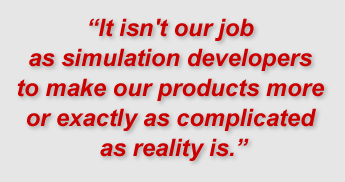 Ssnake: Of course. In a real tank you have a crew of four who are simultaneously doing different jobs. If you include all the intricacies of the fire control system and the automotive system including the fuse box, maintenance, or just the fact that for some things you need both hands to press buttons simultaneously (try that with a single mouse pointer…). Building MODELS of reality means to simplify things. It isn’t our job as simulation developers to make our products more or exactly as complicated as reality is. Our job is to REDUCE the complexity of real life to the truly relevant tasks and decisions that the player must make while relegating tasks of secondary importance to the computer.
Ssnake: Of course. In a real tank you have a crew of four who are simultaneously doing different jobs. If you include all the intricacies of the fire control system and the automotive system including the fuse box, maintenance, or just the fact that for some things you need both hands to press buttons simultaneously (try that with a single mouse pointer…). Building MODELS of reality means to simplify things. It isn’t our job as simulation developers to make our products more or exactly as complicated as reality is. Our job is to REDUCE the complexity of real life to the truly relevant tasks and decisions that the player must make while relegating tasks of secondary importance to the computer.
Vlad: We believe that a good simulator should have an adjustable level of realism, so that even an unprepared gamer could have fun with the game and achieve success in it.
Buckshot: Absolutely, a very detailed simulation can get to a point where starting the engine or working the radar will need a week of study and practice. As I stated previously, a detailed simulation augmented with layers of automation will be beneficial to a user with different skill level. As the user gains more perience and confidence, automation is decreased and at some point the user will be able to increase the detail to the level they desire. The approach of starting at the highest detail point and working backwards to encompass the more casual users results in a simulation which can cater to all types of players, and grow with the user, providing constant challenges as they gain experience.
Dante: If he masters the technical challenge of a very difficult and realistic simulation to the point he accomplishes the objectives, he is no longer an average player — he’s one of us. 🙂
Polovski: Sometimes yes but it depends on your goal as a designer. Sometimes it is required if that’s how it was historically so the player feels just as he would back in time — that could be immersion. However there of course has to be easier or changeable settings to allow less skilled players to compete or see what would happen and reduce boredom or frustration. We have to remember it’s a simulation and not real (almost 😉 )
Flexman: How many times have you watched seasoned gamers crash on the pad or sit there trying to diagnose a problem? Military training washes candidates out at an early stage; I would probably be one of them since I have the attention span these days of the average gamer (possibly). Shelfware is not just limited to sims but console games too. I’ve never seen the end of many of the games I’ve bought.
| SimHQ Special Feature / The Future of Simulations / Table of Contents | |||
|
|
|||
| Page 1 | Page 2 | Page 3 | Page 4 |
| Introduction Participants Consumer Simulations |
Software Development | Software Development (continued) |
Controllers and Peripherals |
|
|
|||
| Page 5 | Page 6 | Page 7 | |
| Multiplayer | Distribution and Publishing | Copy Protection and Intellectual Property | |
|
|
|||


